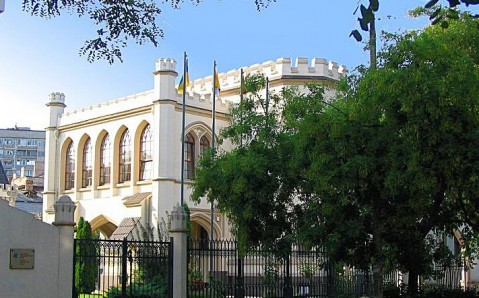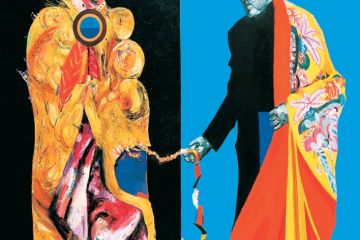The intricate building of the palace was constructed in 1852 to a design by the architect, Felix Gonsiorowski, for his compatriot Zenon Brżozowski. It was built on the site of the proposed military hospital, construction of which took longer than planned due to uncertain reasons. Therefore, the half-finished building was pulled down. Now it is a two-store limestone palace with thick walls, crowned by battlemented turrets.
Read: Flat House in Odessa
Making client wishes come true, the architect designed the palace to produce the biggest impressions from the seaside. The project involved a perimeter formed by four buildings with an open-loop patio in the middle that leaded to the area, which once featured the fountain.

Zenon Brżozowski’s family lived here until 1910, after that the mansion was purchased by Polish count, Józef Schonbek. He turned it into the lodging house. For the next ten years, the palace was rented by Persian shakh, Mohammed Ali, who was dethroned, banished from his own country and settled down in Odessa. His personality served as a base for the majority of rumors and legends of the palace. It is said that upon moving to Odessa, shakh didn’t give up his Oriental customs and decided to organize a harem. He had a habit to get rid of guilty concubines from the ground floor balcony instead of saying them goodbye at the front door. The citizens of Odessa fell in love with overseas guest for his generosity: every time he went out to the city, he would give a lot of presents to everyone who was met at his path. Since then, the locals nicknamed this edifice the Shakh Palace.
Read: Top 3 Hostels in Odessa
In 1920, after Mohammed Ali had left Odessa, the mansion welcomed the House of People’s Arts. Its activities negatively impacted on the state of the building: the interiors were ruined, including tiled stoves, marble fireplaces, decorative parquet. However, the exterior was preserved until today and still can be admired from the outside!
Address: 2 Hoholya str., Odessa







